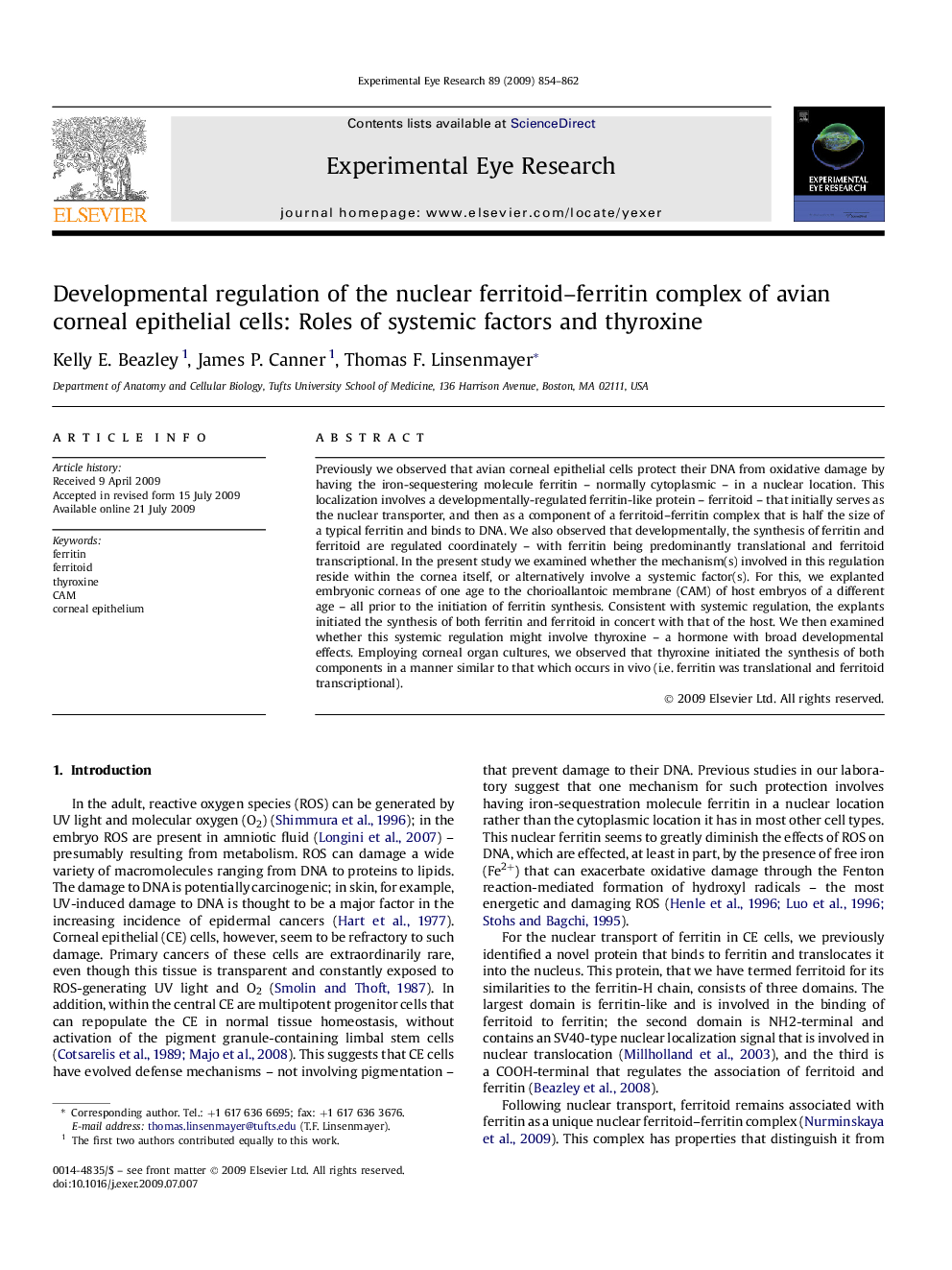| Article ID | Journal | Published Year | Pages | File Type |
|---|---|---|---|---|
| 4012000 | Experimental Eye Research | 2009 | 9 Pages |
Previously we observed that avian corneal epithelial cells protect their DNA from oxidative damage by having the iron-sequestering molecule ferritin – normally cytoplasmic – in a nuclear location. This localization involves a developmentally-regulated ferritin-like protein – ferritoid – that initially serves as the nuclear transporter, and then as a component of a ferritoid–ferritin complex that is half the size of a typical ferritin and binds to DNA. We also observed that developmentally, the synthesis of ferritin and ferritoid are regulated coordinately – with ferritin being predominantly translational and ferritoid transcriptional. In the present study we examined whether the mechanism(s) involved in this regulation reside within the cornea itself, or alternatively involve a systemic factor(s). For this, we explanted embryonic corneas of one age to the chorioallantoic membrane (CAM) of host embryos of a different age – all prior to the initiation of ferritin synthesis. Consistent with systemic regulation, the explants initiated the synthesis of both ferritin and ferritoid in concert with that of the host. We then examined whether this systemic regulation might involve thyroxine – a hormone with broad developmental effects. Employing corneal organ cultures, we observed that thyroxine initiated the synthesis of both components in a manner similar to that which occurs in vivo (i.e. ferritin was translational and ferritoid transcriptional).
